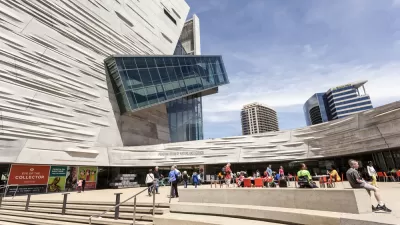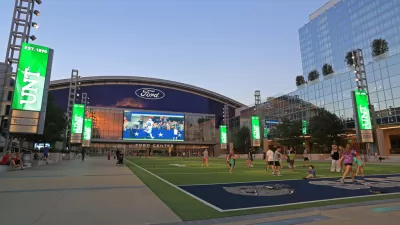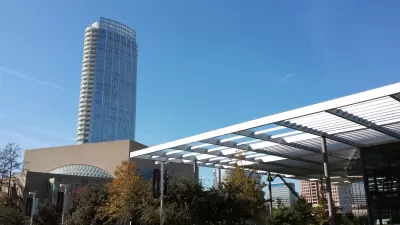Architecture Critic Mark Lamster sets aside the complex issues of lane configurations and traffic calming to focus on a key aspect of walkability: proper lighting.
"The conventional wisdom about Dallas is that people don’t like to walk here; we drive everywhere. This is an automotive city, sure, but the truth is that there is a growing population that enjoys walking, and they’d walk a lot more frequently if the streets were not so unfriendly to the pedestrian," writes Dallas Morning News Architecture Critic Mark Lamster.
Lamster studies the Dallas Arts District as an example of the negative impacts of bad lighting. "The problem is especially egregious along the western stretches of Flora and along Harwood. The ample tree cover on these streets, so welcome during daylight hours, turns them into pitch-black tunnels at night, because the minimal overhead street lighting doesn’t penetrate the dense foliage."
Lamster also finds another reminder of the narrative he's created in past columns of Dallas as the "Paradox City." In this case, the walkability is also affected by being too bright during the day.
FULL STORY: It is too dark (and too bright) in the Arts District

Planetizen Federal Action Tracker
A weekly monitor of how Trump’s orders and actions are impacting planners and planning in America.

Restaurant Patios Were a Pandemic Win — Why Were They so Hard to Keep?
Social distancing requirements and changes in travel patterns prompted cities to pilot new uses for street and sidewalk space. Then it got complicated.

Map: Where Senate Republicans Want to Sell Your Public Lands
For public land advocates, the Senate Republicans’ proposal to sell millions of acres of public land in the West is “the biggest fight of their careers.”

Maui's Vacation Rental Debate Turns Ugly
Verbal attacks, misinformation campaigns and fistfights plague a high-stakes debate to convert thousands of vacation rentals into long-term housing.

San Francisco Suspends Traffic Calming Amidst Record Deaths
Citing “a challenging fiscal landscape,” the city will cease the program on the heels of 42 traffic deaths, including 24 pedestrians.

California Homeless Arrests, Citations Spike After Ruling
An investigation reveals that anti-homeless actions increased up to 500% after Grants Pass v. Johnson — even in cities claiming no policy change.
Urban Design for Planners 1: Software Tools
This six-course series explores essential urban design concepts using open source software and equips planners with the tools they need to participate fully in the urban design process.
Planning for Universal Design
Learn the tools for implementing Universal Design in planning regulations.
Heyer Gruel & Associates PA
JM Goldson LLC
Custer County Colorado
City of Camden Redevelopment Agency
City of Astoria
Transportation Research & Education Center (TREC) at Portland State University
Camden Redevelopment Agency
City of Claremont
Municipality of Princeton (NJ)





























